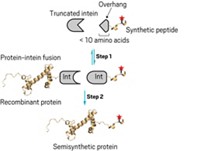Advertisement
Grab your lab coat. Let's get started
Welcome!
Welcome!
Create an account below to get 6 C&EN articles per month, receive newsletters and more - all free.
It seems this is your first time logging in online. Please enter the following information to continue.
As an ACS member you automatically get access to this site. All we need is few more details to create your reading experience.
Not you? Sign in with a different account.
Not you? Sign in with a different account.
ERROR 1
ERROR 1
ERROR 2
ERROR 2
ERROR 2
ERROR 2
ERROR 2
Password and Confirm password must match.
If you have an ACS member number, please enter it here so we can link this account to your membership. (optional)
ERROR 2
ACS values your privacy. By submitting your information, you are gaining access to C&EN and subscribing to our weekly newsletter. We use the information you provide to make your reading experience better, and we will never sell your data to third party members.
Synthesis
Balancing Act Reduces Peptide Aggregation
Scientists modulate molecular aggregation by balancing hydrophobicity and electrostatic repulsion
by Celia Henry Arnaud
March 7, 2011
| A version of this story appeared in
Volume 89, Issue 10
Highly hydrophobic domains make a protein or peptide more susceptible to aggregation. Zhongping Tan, Shiying Shang, and Samuel J. Danishefsky of Memorial Sloan-Kettering Cancer Center report a strategy by which they reduce this aggregation by balancing hydrophobicity and electrostatic repulsion, using a major segment of human erythropoietin (hEPO) as an example (Proc. Natl. Acad. Sci. USA, DOI: 10.1073/pnas.1100195108). The Sloan-Kettering team modified a portion of hEPO by attaching arginine groups to two lysine residues and to two glutamic acids via cleavable allylic ester (shown) or carbamate linkers. This approach allowed the researchers to modify the hydrophobicity and the net charge without altering the underlying amino acid sequence. The allylic linkers are stable under solid-phase synthesis conditions, but they can be removed under mild conditions by palladium-catalyzed deprotection. Peptides containing the arginine tags aggregated much less than did the native peptide and variants containing conventional protecting groups. Such a strategy could help improve the shelf life of synthetically prepared protein and peptide therapeutics, the researchers say.





Join the conversation
Contact the reporter
Submit a Letter to the Editor for publication
Engage with us on Twitter